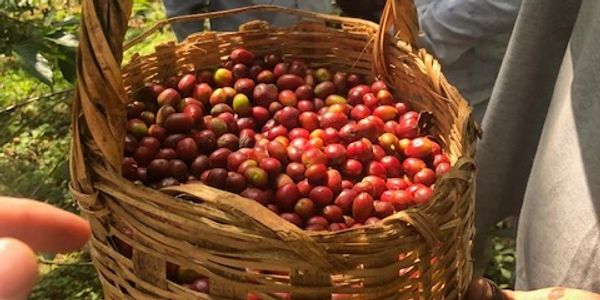Signed in as:
filler@godaddy.com
Signed in as:
filler@godaddy.com


Mustefa Abakeno, a dedicated smallholder farmer in the Jimma Zone of Western Ethiopia, manages an extensive 18-hectare farm located at an impressive elevation of 2,040 meters above sea level. His farm is a testament to the rich coffee heritage of Ethiopia, featuring a diverse array of coffee varieties sourced from the esteemed Jimma research center.
In 2018, Mustefa embarked on his journey as an exporter, benefiting from regulatory changes that allowed him to engage directly with discerning buyers. To facilitate this endeavor, he established the "Beshasha" wet mill, a versatile facility processing both his coffee and that of local outgrowers. These outgrowers, Mustefa's neighbours, collectively oversee land parcels ranging from 4 to 10 hectares.
Mustefa's partnership with the Falcon coffee ( the importer ) in Addis Ababa exemplifies the potential for enhancing coffee quality through direct relationships. This collaboration spans various facets of coffee production, encompassing cherry selection, drying, and farm management. It also streamlines the supply chain, ensuring that a significant portion of the proceeds directly benefits the producers.
Mustefa maintains a small field lab, equipped with a high-spec Sinar moisture reader. This device ensures that all parchment dried in the stations reaches a consistent moisture level before storage in the warehouse.
Notably, Mustefa's commitment to excellence extends to infrastructure development. He has constructed a modern warehouse in Agaro, impeccably equipped for milling Natural processed coffees. This investment underscores his dedication to refining and enhancing coffee cherry processing to meet the highest standards. Additional sites in Echamo, Jarso, Badeyi, and Saadi serve as crucial collection points, where cherries are meticulously selected and purchased from neighbouring farmers. The cherries procured are subsequently transported to the two main processing stations, Beshasha and Kabira, where Mustefa's exacting standards and coffee processing expertise are consistently applied.
Mustefa's strategic expansion not only fortifies his capacity to source exceptional coffee cherries but also reinforces his role as a catalyst for community development within coffee-growing regions.
After some TLC maintenance, the roaster will be up and running and the online store will reopen from the 5th January.